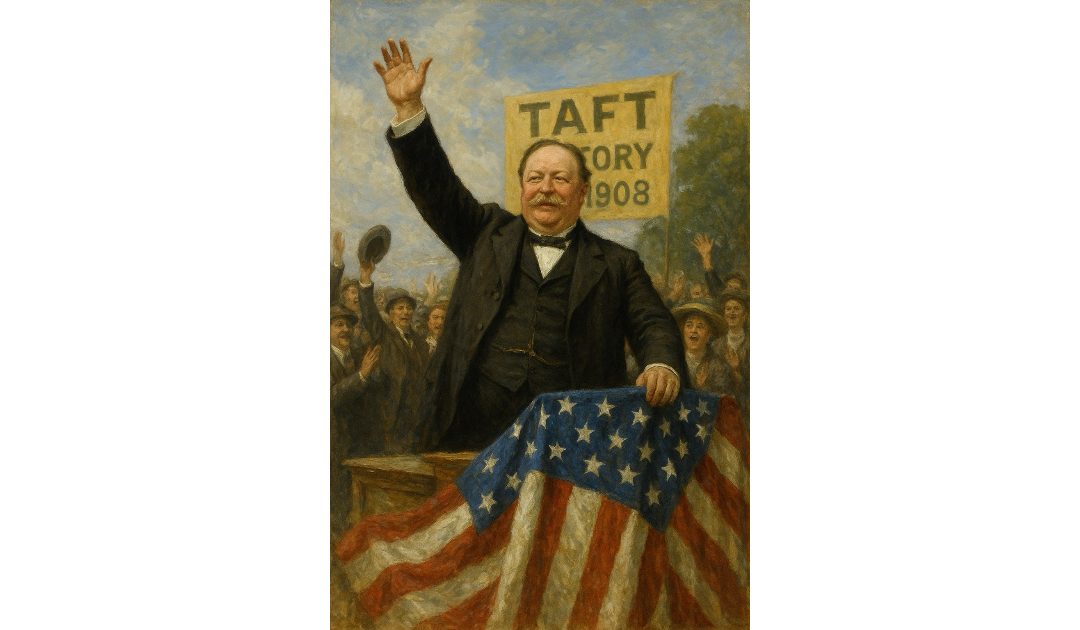Running through the possible events to write about for the 3rd of November, I am drowning in US presidents who took office on this day. I shall choose William Howard Taft because he’s often a pointless answer on Pointless and I don’t know much about him.
William Howard Taft, the 27th President of the United States and later the 10th Chief Justice of the United States, holds a unique position in American history as the only individual to have served in both of these prestigious roles. His life, career, and contributions reflect the complex dynamics of early 20th-century America, characterised by progressive reforms, legal transformations, and shifting political landscapes.
Born on the 15th of September, 1857, in Cincinnati, Ohio, Taft hailed from a politically active family. His father, Alphonso, served as Attorney General and Secretary of War under President Ulysses S. Grant, instilling in young William a strong sense of public service. Taft excelled academically, albeit through hard work rather than latent talent, graduating second in his class from Yale College in 1878. He then pursued law at Cincinnati Law School, passing the bar in 1880.
Taft’s legal prowess quickly became evident. He served as Assistant Prosecutor for Hamilton County, Ohio, before becoming a judge of the Superior Court of Cincinnati in 1887. His judicial career flourished when President Benjamin Harrison appointed him Solicitor General of the United States in 1890, making him the youngest to hold the position at the time. His reputation for fairness and legal acumen led to his appointment as a judge on the United States Court of Appeals for the Sixth Circuit.
In 1900, Taft’s career took an international turn when President William McKinley appointed him as the head of the Philippine Commission, effectively making him the Governor-General of the Philippines. His tenure focused on building infrastructure, reforming the legal system, and promoting education. Tafts administrative skills impressed President Theodore Roosevelt, who appointed him Secretary of War in 1904.
Despite Taft’s preference for the judicial branch, Roosevelt encouraged him to run for the presidency. With Roosevelt’s support, Taft won the 1908 election, defeating Democrat William Jennings Bryan. As president, Taft’s administration was marked by his commitment to progressive reforms and trust-busting, though he often lacked Roosevelt’s charismatic leadership style, leading to tensions within the Republican Party.
Taft’s domestic policies focused on antitrust actions, tariff reforms, and strengthening the Interstate Commerce Commission. Notably, he initiated more antitrust lawsuits than Roosevelt, targeting monopolies to promote fair competition. However, his support for the Payne-Aldrich Tariff Act, which failed to significantly lower tariffs, led to discontent among progressives.
Foreign policy under Taft was characterised by “Dollar Diplomacy,” aimed at promoting American economic interests abroad, particularly in Latin America and East Asia. While intended to foster stability and good relations, it sometimes led to resentment and interventionist criticisms.
The 1912 presidential election became a defining moment in Taft’s political career. A rift with Roosevelt, who felt Taft had abandoned progressive principles, led Roosevelt to form the Progressive Party. The split in Republican votes allowed Democrat Woodrow Wilson to win the presidency, relegating Taft to a one-term presidency.
After his presidency, Taft returned to academia, teaching law at Yale and remaining active in public affairs. His lifelong ambition was realised in 1921 when President Warren G. Harding appointed him Chief Justice of the United States Supreme Court. Taft considered this role the pinnacle of his career, where he focused on judicial reforms, improved court administration, and significant decisions that shaped American constitutional law.
Taft’s tenure as Chief Justice was marked by his efforts to modernise the judiciary. He advocated for the Judiciary Act of 1925, which granted the Supreme Court greater control over its docket, allowing it to focus on cases of national importance. His leadership style promoted efficiency and collegiality among the justices.
William Howard Taft passed away on the 8th of March, 1930, and was buried in Arlington National Cemetery, the first president and Supreme Court justice to receive this honour. His legacy is one of dedication to public service, legal reform, and the unique distinction of having led both the executive and judicial branches of the U.S. government.

